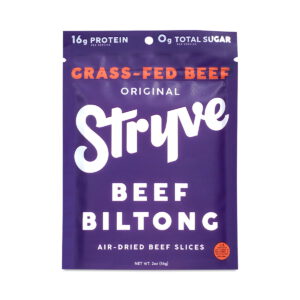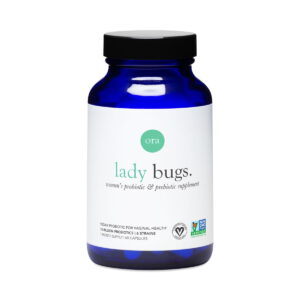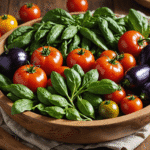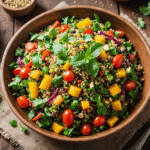- Understanding the Nutritional Benefits of Vegetables
- Sneaky Additions: Blending Veggies into Smoothies
- Flavor Boost: Using Vegetables as Sauces and Dips
- Creative Substitutes: Veggies in Place of Pasta and Rice
- Colorful Salads: Making Veggies the Star of Your Dish
- Fun and Engaging: Involving Kids in Veggie Preparation
When it comes to grocery shopping, knowing what to look for can make a significant difference in how well you can incorporate veggies into your meals. Start by making a list of the vegetables you want to include in your family’s diet, prioritizing those that are in season or locally sourced. Not only will this support local farmers, but seasonal vegetables often taste better and are more affordable.
When browsing the produce section, aim for a variety of colors on your plate. Brightly colored vegetables such as bell peppers, carrots, and leafy greens indicate a range of nutrients that contribute to overall health. Opt for organic produce when possible, especially for the “dirty dozen”—those fruits and vegetables known to have higher pesticide residues. This includes items like strawberries, spinach, and kale, making organic choices a safer and healthier option to ensure your family enjoys nutritious, clean foods.
For those on a budget, consider frozen and canned vegetables. These options are often just as nutritious as fresh produce and can be more cost-effective, as they have a longer shelf life and reduce waste. Look for products with no added sugars or preservatives; just check the labels to ensure you’re making healthy choices. When buying canned vegetables, select those packed in water or their own juice rather than heavy syrups or sauces to keep them healthy.
Online shopping has become a convenient way to stock up on groceries, but it’s crucial to be cautious. When ordering perishable items like vegetables, ensure that the retailer has a good reputation for handling and delivering fresh produce. Pay attention to customer reviews regarding the freshness and quality of their groceries. Also, if you’re buying from local delivery services, confirm that they follow safe handling practices to guarantee that your vegetables arrive in the best condition.
As you continue your shopping journey, don’t forget to explore healthy snacks that can be paired with veggies. Look for hummus or yogurt-based dips that can turn veggies into quick, satisfying snacks, and check the ingredient lists for any added preservatives or unhealthy fats. High-protein snacking options like chickpeas or edamame can also support an active lifestyle while providing the necessary energy for busy days.
Lastly, if you have kids, get them involved in the grocery shopping experience. Not only will this make them more excited about eating vegetables, but they can also help pick out new varieties to try. Make it a fun adventure by discussing the benefits of each veggie and brainstorming healthy meals to prepare together. By transforming grocery shopping into a family activity, you can foster a love for healthy eating habits in your children.
Sneaky Additions: Blending Veggies into Smoothies
Smoothies offer a delightful and effective way to incorporate veggies into your daily routine without compromising taste. This method allows you to sneak in a variety of vegetables while still enjoying a flavorful beverage, perfect for breakfast on-the-go or a refreshing afternoon snack. The key is to select vegetables that blend well with fruits, enhancing the overall flavor and nutritional profile of your smoothies.
Leafy greens like spinach and kale are popular choices because they have a mild taste that easily gets masked by sweeter fruits such as bananas, berries, or mangoes. Additionally, root vegetables like carrots and beets can add a vibrant color and a hint of sweetness. Even zucchini and cauliflower are excellent options as they create a creamy texture when blended but remain virtually undetectable in terms of flavor.
When crafting your smoothie, it’s essential to achieve a balanced mix of flavors and textures. Start with a base, which can include almond milk, coconut water, or yogurt for a creamy consistency. Then, add your fruits, followed by your chosen veggies. A handful of nuts or seeds, such as chia or flaxseed, can boost the protein and omega-3 content, creating a more satisfying meal replacement.
For a clearer understanding of how to effectively combine these ingredients, consider the following table showcasing some ideal vegetable and fruit pairings for your smoothies:
| Vegetable | Fruit | Added Benefits |
|---|---|---|
| Spinach | Banana | High in iron and potassium |
| Kale | Pineapple | Rich in vitamins K and C |
| Carrot | Mango | Contains beta-carotene and vitamin A |
| Zucchini | Strawberry | Low in calories, high in hydration |
| Beet | Apple | Antioxidant-rich, supports liver health |
To make the most of your smoothies, consider batch-prepping your ingredients. Prepare individual bags containing your chosen vegetables and fruits, and store them in the freezer. This way, when you’re ready to whip up a smoothie, you can simply grab a bag, toss it in the blender, and add your liquid base. This method not only saves time but also ensures you always have fresh veggies on hand to incorporate into your healthy meals.
Don’t hesitate to experiment with flavors and textures. Avocado can add creaminess, while spices like cinnamon or ginger can provide an extra kick. By creatively mixing different veggies and fruits, you can develop unique smoothie recipes that keep you excited about your health journey.
Flavor Boost: Using Vegetables as Sauces and Dips
When it comes to transforming vegetables into delicious sauces and dips, the grocery store can be your best friend. Not only can you find fresh and flavorful produce, but you can also explore various pantry staples that enhance your sauce-making game. Start by selecting vegetables that pack a flavor punch, such as roasted red peppers, tomatoes, or even butternut squash. These veggies can be pureed into creamy sauces or blended into zesty dips that will elevate any meal.
For a quick and healthy dip, consider using ingredients like avocados, which provide a smooth texture and healthy fats, or cooked beans, like black beans or chickpeas, which can add protein and fiber. Mixing these with garlic, lemon juice, and a touch of olive oil creates a creamy and nutritious dip that pairs perfectly with veggies.
Don’t overlook the power of spices and herbs to boost flavor. Ingredients like basil, cilantro, or even a pinch of cayenne can enhance a basic tomato sauce or hummus, making them more appealing for both kids and adults alike. When shopping, look for fresh herbs in the produce section, or consider dried varieties for convenience—both options can significantly enrich your meals.
As you browse the grocery aisles, check out the ethnic foods section, where you can find unique dipping sauces and spices. Items like tahini (a sesame paste) and miso paste can add complexity to your culinary creations. Experimenting with international ingredients not only broadens your palate but also introduces new ways to incorporate veggies into your diet. For instance, a simple tahini sauce made with roasted garlic and lemon can transform a monotonous veggie platter into an extraordinary culinary experience.
For fitness enthusiasts needing a healthy sauce for post-workout meals, creating a pesto with blended spinach, kale, or even arugula can make a protein-rich addition to whole grain pastas or grilled chicken. Pair this with a homemade yogurt sauce flavored with herbs to create balanced and filling meals that fuel your body.
Shopping for sauces and dips online can be a convenient alternative, but it’s essential to be savvy about ingredient quality. Look out for brands that focus on natural ingredients without preservatives or added sugars. Read reviews to ensure the products meet your standards, especially for organic and vegan options. When purchasing perishable items like dips that require refrigeration, confirm that the retailer has a solid return policy for items that don’t meet freshness standards, ensuring the quality of what you receive.
Moreover, consider creating your own sauces at home, as it can be both budget-friendly and satisfying. Fresh ingredients from local farmers’ markets not only taste better but are often less expensive than their store-bought counterparts. Take advantage of seasonal produce, as this can result in creative cooking opportunities that highlight the best flavors nature has to offer.
Lastly, why not make sauce and dip creation a family affair? Involve kids in choosing veggies at the grocery store, allowing them to pick their favorites to incorporate into sauces. Offering them a role in the kitchen can spark their creativity and build a healthier relationship with food—one that emphasizes the joy of cooking and eating together.
Creative Substitutes: Veggies in Place of Pasta and Rice
Even though traditional pasta and rice often dominate our plates, there are a plethora of vegetables that can be transformed into satisfying substitutes full of flavor and nutrition. By swapping out these starchy staples for nutrient-dense veggies, you can create meals that not only enhance your diet but also introduce new textures and tastes to your table.
One popular option is spaghetti squash, which, when roasted, has a delightful stringy texture that mimics traditional spaghetti. Simply roast the squash until tender, scrape the insides with a fork, and top it with your favorite pasta sauce or a medley of sautéed vegetables. This low-carb alternative is an excellent way to incorporate veggies while still satisfying cravings for comfort food.
Zucchini is another versatile choice, especially when transformed into “zoodles” (zucchini noodles). Using a spiralizer or a simple vegetable peeler, you can create long, thin strips that serve as a base for various sauces, grilled meats, or even tossed in salads. Lightly sautéing them before serving enhances their flavor while retaining a satisfying crunch, allowing you to create healthy meals that don’t compromise on taste.
For a heartier swap, consider using cauliflower. Cauliflower rice has gained immense popularity as a grain alternative due to its mild flavor and ability to absorb spices and sauces beautifully. You can easily make your own by pulsing florets in a food processor and then sautéing them with garlic and onions for added depth. It serves as an excellent base for stir-fries, burrito bowls, or as a side dish to complement your proteins.
Carrots are also a fantastic option, particularly when you roast them into a creamy mash or spiralize them into ribbons. Carrot noodles add a sweet note to salads or Asian-inspired dishes and pair beautifully with ginger or sesame-based dressings. When using carrots, you’re not just enjoying a delicious alternative; you’re also boosting your beta-carotene intake, which is essential for eye health.
Sweet potatoes can serve as a comforting substitute for rice. Their natural sweetness pairs well with spices and savory ingredients. You can cube or mash them, or even thinly slice them to create sweet potato “rice” that can be served alongside stews or stir-fries, offering a wholesome touch to your meals.
Experimenting with these vegetable substitutes not only nourishes your body but also sparks creativity in the kitchen. The key is to keep experimenting with different textures and flavor profiles until you find combinations that excite your palate.
“Eating well is a form of self-respect.” – Unknown
Making vegetables the star of your meals can redefine your approach to cooking and inspire a newfound appreciation for wholesome ingredients.
Do not forget to encourage family involvement in this culinary adventure. Kids can help with washing, peeling, or even deciding which vegetables to incorporate into the menu. This hands-on experience fosters a connection to the food they eat and encourages healthier eating habits. Engaging children in the kitchen helps make veggie substitutes a regular part of your meals, setting the stage for lifelong healthy eating practices.
Colorful Salads: Making Veggies the Star of Your Dish
Transforming salads into vibrant displays of color not only enhances their visual appeal but also highlights the variety of nutrients that vegetables can offer. To make veggies the star of your dish, consider a base of leafy greens like kale, spinach, or a mixed baby green blend. These greens are nutrient powerhouses, brimming with vitamins and minerals that support overall health. Layer your salad with a rainbow of vegetables—think bright bell peppers, roasted beets, shredded carrots, and cherry tomatoes—to benefit from a diverse array of nutrients and antioxidants.
Don’t restrict yourself to traditional salad toppings; unleash your creativity by incorporating unexpected ingredients. Add roasted vegetables, such as sweet potatoes or Brussels sprouts, for a delightful twist that brings warmth and depth to the dish. Incorporating grains, such as quinoa or farro, can also enhance texture and add healthy carbs to your meals. These grains not only lend a nutty flavor but also keep you satiated, making your salad a filling option rather than a side dish.
For added pizzazz and flavor, consider mixing in nuts or seeds like walnuts, pumpkin seeds, or sunflower seeds. These elements provide a satisfying crunch, a boost of healthy fats, and vital nutrients like magnesium and vitamin E. Additionally, fresh herbs should not be overlooked. Chopped basil, parsley, or cilantro can elevate a standard salad dressing to a sensational vinaigrette, infusing your dish with aromatic flavors.
When preparing your salads, explore a variety of dressings to complement the ingredients. A simple homemade dressing made with olive oil, vinegar, mustard, and honey can enhance the flavors of your vegetables while ensuring you control the ingredients. Experiment with different acid sources, such as citrus juice or flavored vinegars, to find what accentuates your chosen ingredients best.
Salads can also be a canvas for experimentation, appealing to taste preferences and dietary needs. If you’re seeking more protein, consider adding beans, chickpeas, or grilled chicken. Incorporating seasonal fruits, such as apple slices, berries, or citrus segments, can provide a sweet contrast to the savory elements, creating a well-rounded taste experience.
As you navigate through the grocery store, remember to select supporting ingredients that will not only contribute to a beautiful and nutritious dish but also support your health goals. By encouraging yourself to think creatively about how to incorporate veggies into your meals, you unlock a multitude of culinary possibilities. Your salads can become anything but ordinary, captivating not just with their nutrition, but also with their inviting flavors and textures.
- What are the best vegetables to include in salads?
- Leafy greens like spinach, kale, and arugula serve as great bases. You can also add colorful vegetables like bell peppers, cucumbers, cherry tomatoes, and shredded carrots for added flavor and nutrients.
- How can I make my salads more filling?
- Add ingredients like quinoa, chickpeas, or cooked grains to increase protein and fiber content. Incorporating healthy fats from avocado or nuts will also help keep you satiated for longer.
- Are there any creative dressings I can make at home?
- Yes, simple dressings can be made by mixing olive oil, vinegar, mustard, and honey or maple syrup. You can also experiment by adding herbs, spices, or citrus to create unique flavors.
- Can I use cooked vegetables in my salads?
- Absolutely! Roasted or grilled vegetables like squash, zucchini, or sweet potatoes add warmth and depth, elevating your salad from a side dish to a fulfilling meal.
- How do I keep my salads fresh for longer?
- Store salad components separately, particularly greens and dressings, to prevent sogginess. Consider using airtight containers and keeping ingredients chilled until ready to serve.
- Is it okay to add fruits to salads?
- Yes! Fresh fruits like berries, apples, or citrus not only bring sweetness but also balance savory flavors, making your salads more interesting and nutritious.
- How can I get kids to eat more veggies in salads?
- Involve them in the salad-making process by letting them choose their vegetables and help with preparation. Making salads visually appealing with colorful ingredients can also boost their interest.
Fun and Engaging: Involving Kids in Veggie Preparation
Getting kids involved in the kitchen can transform meal preparation into a fun and educational experience, making family cooking time an exciting venture. Start by inviting your children to join you during grocery shopping. Turn it into a treasure hunt by challenging them to find a variety of colorful vegetables in the produce section. This not only makes the shopping trip entertaining but also teaches them to appreciate the different types of produce available, ultimately helping them build a connection with fresh, healthy meals.
Once home, you can involve them further by letting them assist in washing, peeling, and even chopping soft vegetables like cucumbers and bell peppers (with supervision, of course). Consider making it a game where they can earn points for each new vegetable they taste, thereby deepening their interest in exploring a diverse range of flavors.
One engaging activity could be to create personalized veggie platters. Provide various dips, like yogurt-based or hummus dips, which they can help prepare. Encourage your kids to arrange the veggies themselves on a colorful platter, allowing them creative freedom. Not only is this an enjoyable task, but it also gets them excited about eating what they’ve made!
Incorporating veggies into family meals can further enhance this experience. Plan a weekly “Veggie Night” where everyone participates in cooking. Assign each family member a vegetable to feature in the meal, whether it’s zucchini being spiralized for “zoodles” or sweet potatoes chopped for roasting. This not only teaches children about different cooking methods but also fosters a collaborative atmosphere that emphasizes healthy eating.
Make it a tradition to discover a new vegetable each week. Buy something unfamiliar and research together how to incorporate it into meals, teaching them about the nutritional benefits as well. Finding and experimenting with local produce can reveal the delights of seasonal veggies, making it exciting as they anticipate new flavors each week.
Additionally, involving kids in meal planning can nurture a sense of responsibility. Encourage them to help select a new recipe that includes their favorite vegetables or to suggest ways to incorporate less popular veggies into dishes they already love. Their input might surprise you, and it can lead to innovative culinary creations that you might not have considered before.
Finally, leverage technology by utilizing cooking apps that cater to kids. Many of these apps offer engaging videos and interactive guides to create healthy meals together. Watching cooking tutorials as a family can foster teamwork, communication, and creativity, all while reinforcing solid cooking skills.
By immersing kids in these culinary adventures and making the experience enjoyable, you set the stage for lifelong healthy eating habits. They won’t just learn to enjoy their veggies—they’ll remember the joy of cooking together and the delicious meals that came from it, paving the way for a healthier future.
New Customers Offer!
Free Gift for the new customer
$24 Value, When You Subscrib Visit Thrive Market











